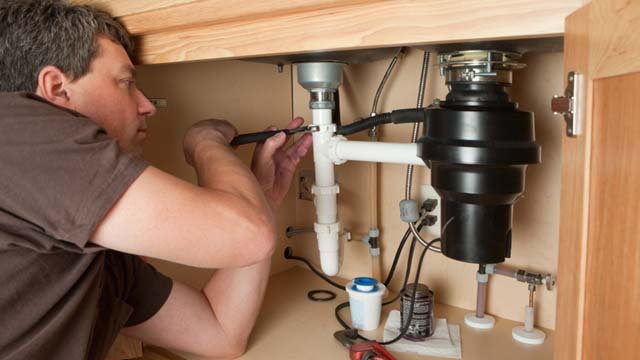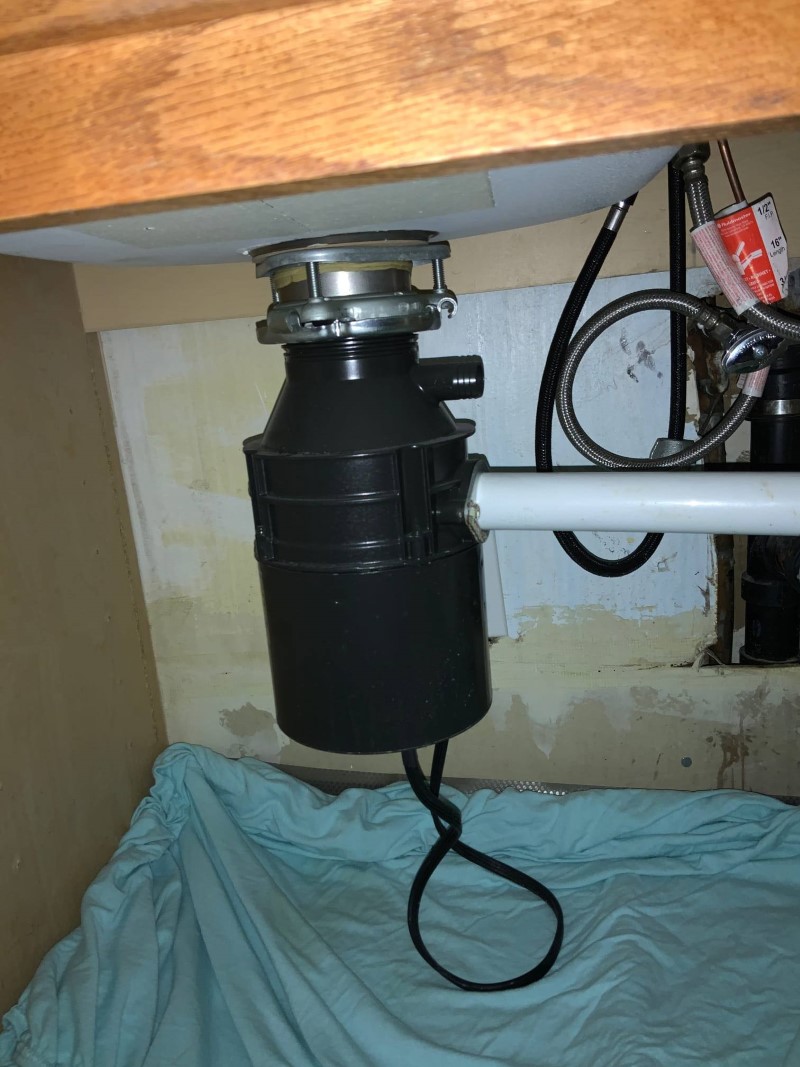Our Guide to Resolving a Leak in Your Garbage Disposal
Our Guide to Resolving a Leak in Your Garbage Disposal
Blog Article
The content in the next paragraphs on the subject of The Handy Guide To Fixing Your Garbage Disposal Leaking is amazingly remarkable. You should check this stuff out.

Garbage disposals are important kitchen area home appliances that aid in taking care of food waste successfully. Nevertheless, a leaking garbage disposal can be a discouraging and unpleasant problem to handle. Luckily, several leaks can be fixed conveniently with a couple of straightforward actions. In this post, we will certainly go over exactly how to take care of a leaking garbage disposal efficiently.
Introduction
Waste disposal unit are set up under kitchen area sinks and are created to shred food waste right into smaller sized pieces, permitting it to travel through the pipes system easily. While these devices are usually trustworthy, leakages can occur over time because of wear and tear, loose links, or damages to the system.
Typical Root Causes Of Leaks in Trash Disposals
Worn Seals and Gaskets
Seals and gaskets play an essential duty in stopping water from leaking out of the garbage disposal. Gradually, these elements can deteriorate, leading to leakages around the disposal system.
Loose Connections
The links in between the garbage disposal and the pipes system can come to be loosened with time, triggering water to leak out throughout procedure.
Fractures or Holes in the Disposal Device
Physical damages to the garbage disposal, such as splits or openings in the housing, can also cause leakages.
Determining the Source of the Leakage
Before trying to deal with a dripping garbage disposal, it is essential to identify the resource of the leak. This can usually be done through visual examination or by carrying out straightforward tests.
Visual Examination
Examine the garbage disposal device very carefully for any signs of water leak. Pay close attention to locations around seals, gaskets, and link points.
Examining for Leaks
One method to examine for leaks is by running water via the disposal device and checking for any kind of noticeable signs of leak.
Devices and Materials Needed for Repairing a Dripping Garbage Disposal
Prior to starting the repair work process, gather the essential tools and materials, consisting of a screwdriver, flexible wrench, plumbing technician's putty, substitute seals or gaskets, and epoxy or patching material for repairing fractures or openings.
Step-by-Step Guide to Repairing a Dripping Waste Disposal Unit
Shut off the Power
Before attempting any kind of fixings, make certain that the power to the waste disposal unit system is switched off to stop the risk of electrical shock.
Situate the Leakage
Recognize the exact place of the leakage and figure out the reason.
Tighten up Connections
Utilize a wrench to tighten up any type of loosened links between the disposal unit and the plumbing system.
Replace Seals or Gaskets
If the leak results from worn seals or gaskets, remove the old elements and replace them with new ones.
Patching Fractures or Openings
For fractures or openings in the disposal unit, use epoxy or an ideal patching product to secure the broken area.
Checking the Garbage Disposal After Repair
When the repair is total, examine the garbage disposal by running water through it to make sure that the leak has actually been dealt with.
Preventive Upkeep Tips to Prevent Future Leakages
To avoid future leakages, it is essential to do regular upkeep on your waste disposal unit. This includes keeping it tidy, avoiding putting non-food products or difficult things down the disposal, and regularly checking for leaks or other concerns.
Verdict
In conclusion, taking care of a leaking waste disposal unit is a reasonably straightforward process that can be completed with standard tools and products. By adhering to the actions outlined in this post and practicing preventative upkeep, you can keep your waste disposal unit in good working problem and avoid expensive repair services in the future.
HERE’S HOW TO FIX YOUR GARBAGE DISPOSAL
WHAT TO DO IF SOMETHING IS STUCK IN YOUR GARBAGE DISPOSAL
If the impeller won’t turn, there’s probably something stuck in the disposal. It could be a steak bone or peach pit, although plumbers report pulling all sorts of inappropriate objects out of disposals, such as bottle caps or aluminum foil. Make sure power to the disposal is off, and look inside to see if you can see the source of the jam.
Never stick your fingers in a disposal. Pull out anything you see with tongs or pliers.
If the disposal still won’t work, it may be time to call a plumber or consider buying a new disposal. GEM Plumbing & Heating is here for all of your garbage disposal needs.
WHAT TO DO IF YOUR GARBAGE DISPOSAL DRAIN IS CLOGGED
Take everything out from underneath your sink and put a bucket or other container under your disposal to catch any water that drains out. Disconnect your disposal from the power supply. If it’s plugged into a wall outlet, unplug it. If it’s hardwired into an electrical box, go to the electrical panel and turn off the breaker for the disposal. Pour ¼ cup of baking soda into the drain, followed by ½ cup of white vinegar. Give the solution a few minutes to fizz and do its work. Look into the disposal with a flashlight to see if you can see an object that might be causing the clog. If you see it, remove it using tongs or pliers. MORE TIPS ON DEALING WITH A CLOGGED GARBAGE DISPOSAL
Never use drain cleaner in a garbage disposal. It can damage the plastic parts inside the disposal. You can also be splashed with the caustic liquid while working to clear the clog. Beware! Never stick your fingers into a garbage disposal. Trust us — not a good idea. In many instances, your dishwasher drains through your garbage disposal. This allows the disposal to grind any large food particles that may be drained out of your dishwasher. There are some jurisdictions, however, where the plumbing code prohibits such a connection. WHAT TO DO WHEN YOUR DISHWASHER DRAINS THROUGH THE DISPOSAL
Run some water in the sink so your plunger has at least a ½-inch of water to create a seal and plunge vigorously up and down several times. You may need to repeat this several times. Run hot water down the drain to clear any residue that remains.

Do you enjoy reading about How to fix a pretty consistent leak from my garbage disposal? Give feedback directly below. We would be delighted to hear your ideas about this blog post. In hopes to see you back again in the near future. Are you aware of another individual who is interested by the niche? Why not share it. Thanks for your time. Don't forget to come visit our blog back soon.
Schedule Service Now Report this page